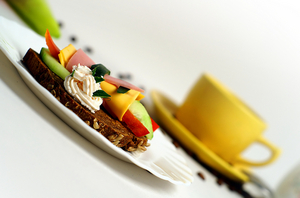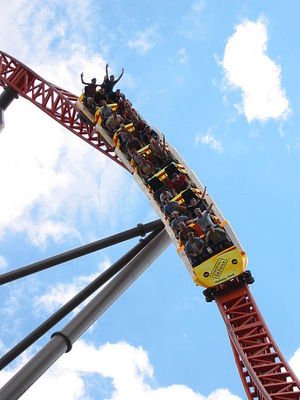Brugmansia, also called angel’s trumpet, is a spectacular specimen plant for the garden. Growing 6 to 10 feet tall and bearing strikingly large pendant flowers, this perennial plant can even be grown in USDA zone 6 with protection. Despite their tropical appearance, brugmansias are easy to grow.
This is truly a massive herbaceous plant. For maximum effect, give it plenty of room to grow. Individual leaves are around eight to ten inches long, with the eventual final height and spread six to ten feet, and sometimes more depending on the variety. These plants will develop a very attractive mushroom shaped canopy, but the real show stopper is the flowers. Blooms are very large, in some cultivars over a foot long, and very fragrant. Color depends on the variety, with shades of orange, pink, peach, yellow, and white. Blooming is profuse, and long lasting in places with high summer heat and humidity. Despite its breathtakingly lovely appearance, brugmansia is very poisonous. It is a member of the nightshade family, which includes tomatoes, peppers and eggplant. The foliage and flowers are extremely toxic, so grow this plant in an area not frequented by children or pets. Even deer avoid eating brugmansia.
Brugmansias like soil high in organic matter and well drained. If planted outside, especially in places with wet winters, drainage is important. Conversely, during the summer this is a water guzzling plant. Any wilting should be seen as an immediate need for more moisture. If summer weather is cool and damp, less watering is needed. A planting bed of well composted steer or chicken manure will produce good growth, but in areas with a short growing season a chemical fertilizer may have to be applied. Winter hardiness increases substantially with the size and age of the plant. If using a chemical fertilizer, a water soluble one is important. Slow release fertilizers simply will not act fast enough. There are also organic water soluble fertilizers; these will work well but must be applied more often. Avoid using too much nitrogen. It will cause the plant to exhibit a mass of lush green growth, but few if any flowers. New growth from high nitrogen fertilizer is also more prone to pest problems. Aphids especially seem drawn to it. Plants can be pruned to a central trunk to form a tree. Their natural habit is a bit shrubby, and the tree form is a good way to showcase the flowers.
Very hot weather can be hard on these plants. Where summer temperatures are consistently scorching, brugmansias do far better planted in shade or partial shade. Planting in full sun is indicated in cool summer areas, such as the pacific northwest. Otherwise, it is best to err on the side of caution and plant in partial shade. This is such a thirsty plant that full hot sun combined with high temperatures will lead to wilting and foliage die back.
Brugmansias don’t often bloom their first year. They need to reach a good size before flower production commences. Another odd thing about them is their strange dislike of chlorinated water. Plants irrigated with city water do noticeably poorer than those receiving rainwater or distilled water. Try watering one brugmansia with chlorinated water exclusively, and another with rainwater, and there will be a startling difference.
Overwintering brugmansias is easy. Although most are hardy in USDA zones 8-10, even zone 6 and 7 gardeners can grow them with winter protection. After the top growth dies back in the fall, cut the trunk back to about a foot from the ground. With older plants, the trunks will need to be slightly taller. Cover with a thick layer of mulch, such as straw or leaves, and place a layer of plastic over the whole thing. Cover the plastic with burlap. The burlap shades the plastic and prevents it from over heating during sunny winter weather. A large ceramic or plastic pot can also be upended over the mulched stems, with the drainage holes covered. Winter moisture, combined with freezing and thawing cycles, is death for brugmansias.
Overwintering plants can also be done by planting in a container. Container growing presents its own set of challenges. Brugmansias need a lot of root room, so find the largest container you can comfortably move. Container grown plants can be even slower to bloom than their in ground planted brethren. Fertilizing and watering will be a constant summer chore. The only good thing about this is the lack of work when winter arrives. Simply cut back the plant to a couple feet, and move whole pot to a cool area that does not freeze. The brugmansia will stay in a dormant state until spring.
When spring arrives, begin periodically checking the plants for signs of growth. No matter how tempting it may be, do not remove the covering or bring the potted specimen out before the last frost. One night of freezing temperatures on tender new growth will severely set back the plant. Once the weather is stable, fully uncover them. Full growth may take awhile to get started until summer heat sets in, but by midsummer the brugmansia should be quite large.
Slugs and aphids are the only real pest problems. Aphids can be eliminated with a strong spray of water.Handpicking slugs from the foliage is effective but unpleasant, but some slug baits sold at garden centers are non-toxic to pets and other wildlife.



